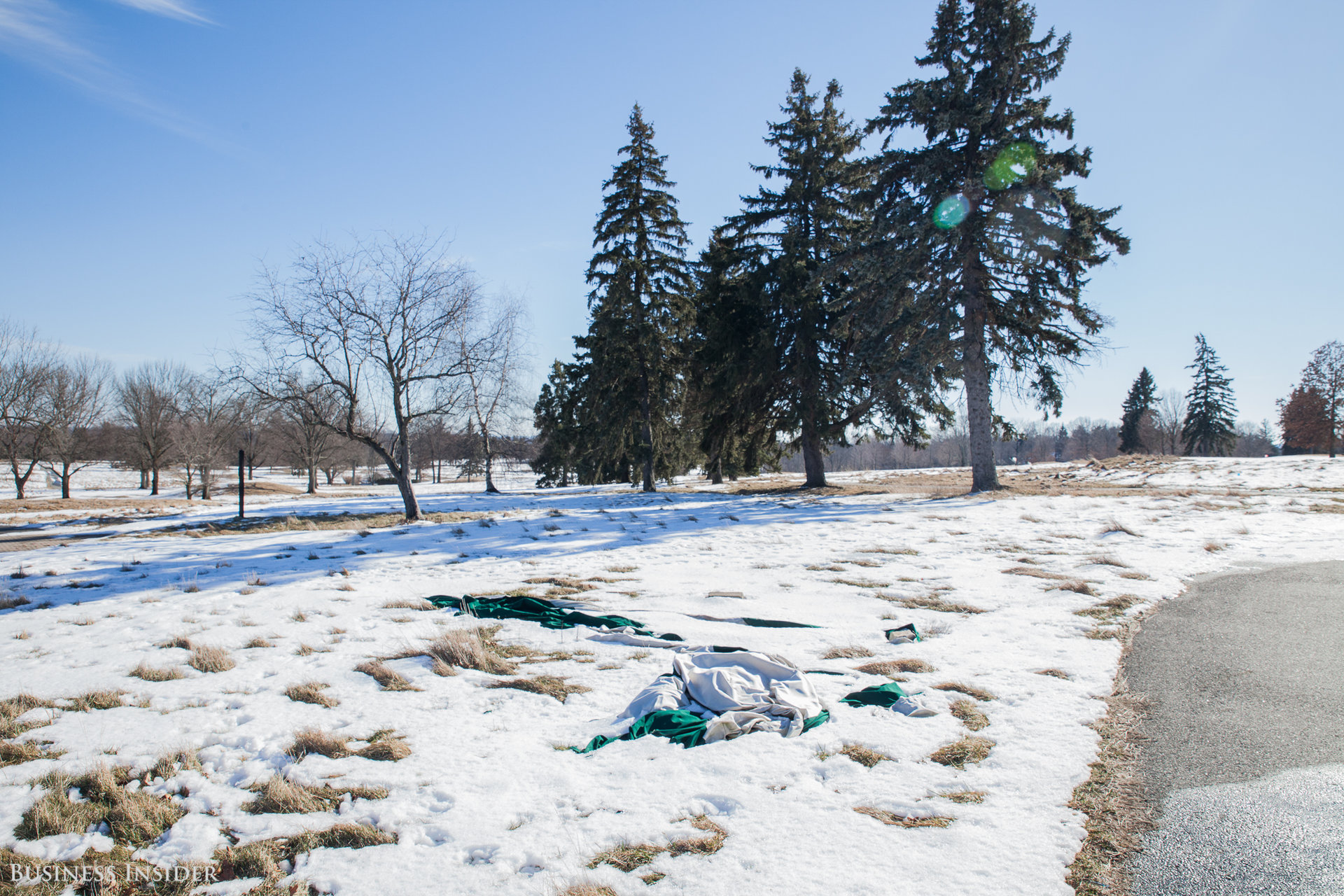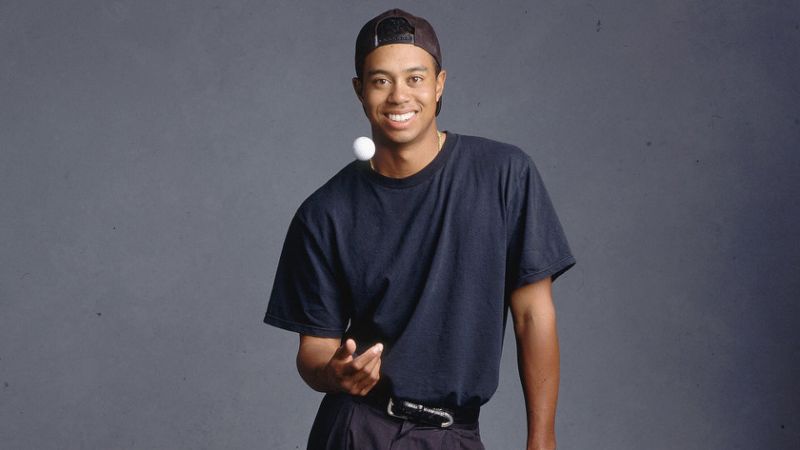

Once an active golf course, Apple Ridge Country Club, which opened in 1966 in Mahwah, New Jersey, is now an abandoned plot of land being used as a construction site for a 78-home project. It is just one of over 800 golf courses in the U.S. that have shut down over the past dozen or so years and a manifestation of a general decline in the game throughout that time period. There were 28.8 million golfers in the U.S. in 2000 and 30 million in 2005, but this number steadily decreased over time: “According to the National Golf Foundation, there were...26.1 million in 2010, 25.5 in 2011 and 25.3 million in 2012” (O’Brien). Since then, this number has decreased further to 23.8 million in 2016 (National Golf Foundation, 2017). Herbert Hainer, former CEO of Adidas, which sold Taylormade—one of the leading golf club manufacturers in the past decade—to KPS Capital Partners in 2017, acknowledged that “A decline in the number of active players...caused immense problems in the entire industry, and as a market leader, this hit [them] particularly hard” (Harwell 2015). The overarching explanation for this decline is simple: people are simply less interested in golf. But there are various reasons why this has been the case.
Pete Cowen, who runs a golf academy in England and has worked with professional golfers including Sergio Garcia and Henrik Stenson, says this: “Golf is in danger, but the solutions are clear: We must be more family-orientated, and cheaper. I don’t think there is any doubt at all that golf is nowhere as inclusive as it needs to be”. Here, he addresses the issue that golf is too exclusive for many due to a variety of factors such as cost. The cost to play a round of golf, typically referred to as “green fees,” can vary depending on the course and general location. For example, a round at Torrey Pines Golf Course (North)—a course based in San Diego, California and one of the highest-regarded public courses in the United States—costs $122 as of December 2018, whereas a round at Stone Creek Golf Club, a course based in Oregon City, Oregon, can cost less than $30. Green fees may or may not include the cost to use a golf cart, which could add another fifteen dollars or more, depending on the course. There are also costs associated with clubs, shoes, balls, and apparel, which combined could cost upwards of a thousand dollars assuming one buys the latest equipment. For many, these costs simply make playing golf unaffordable and unjustified when they could easily find cheaper alternatives to spend their leisure time on.

Another factor is the amount of time it takes to play a round of golf; one round of eighteen holes can take more than four hours, depending on pace of play and the length of the course, and many simply cannot afford to spend that much time. Jack Nicklaus, often regarded as one of the greatest golfers of all time, says this: “I’d like to play a game that can take place in three hours...I’d quite like to play a game that I can get some reasonable gratification out of very quickly” (Harwell, 2015). Of course, this does not apply to driving ranges, where people can spend however much time they want; it is an issue solely with respect to playing a round of golf on a course.
Cowen also points to the traditions that the game of golf holds onto, such as the tendency of courses to require players to wear golf shoes: “We need to do whatever it takes. Let the kids wear trainers, let them play computer games in the clubhouse. Most kids don’t even have shoes, let alone golf shoes. It’s ridiculous.” This can be an obstacle for many who do not have golf shoes because golf shoes cost money, oftentimes upwards of one hundred dollars. Requiring collared shirts is another common dress code imposed by clubhouses, and even though most people probably have collared shirts, this could be unappealing to some because of the sense of prestige it emits. These are examples of how holding onto tradition can limit golf’s growth: considering that it is perfectly viable to play golf in sneakers and a tee shirt, requiring golfers to abide to these kinds of dress codes does not make sense—at least at public golf courses—and only narrows the game’s audience. (At private country clubs which have members, this may not be as much of a problem since the clubs are self-selecting and often include wealthy individuals who can afford to buy golf apparel.)
To combat its decline, the game of golf must address these issues. And while tackling the issues of cost and time may be especially difficult, the game of golf already has an example of what challenging tradition looks like; one need look no further than Tiger Woods’ impact on the game.
When Tiger Woods first entered the professional golf scene in the summer of 1996, golf simply was not cool. But the public’s perception of golf changed soon after. Chris Riley, former Ryder Cup teammate of Woods, states, "'At sports bars now, people will watch golf, especially if Tiger is playing. Even if he's not playing. But pre-1996, nobody watched golf unless you were a golfer.'" Orin Starn, a cultural anthropology professor at Duke University, says the following in his book The Passion of Tiger Woods: "Tiger embodied a kind of modern cool that golf hadn’t seen before...This was to a certain degree, and still is, a bland, vanilla sport played by anonymous white guys who all dress the same and look the same. So to have this charismatic, young African-American-Asian-American hybrid figure bursting onto the scene made huge news." In his differences as well as his talent, Tiger was defying the game’s traditions and making golf more appealing to others in the process.

This was especially the case with respect to younger audiences, including some of today’s young stars. In an interview with the Irish Independent, Rory McIlroy had this to say about Woods: “I’m probably one of the biggest Tiger fans you will ever come across. I grew up watching him play and know all of his records. I remember going to play at Doral when I was eight or nine—my first tournament over there—and being on the 18th fairway of the ‘Blue Monster’ thinking: ‘Wow! Tiger has been here. He's been on the same fairway!’ That sort of stuff. And all of a sudden you are shooting a commercial with him.” Japanese talent Hideki Matsuyama also grew up idolizing Tiger: “‘Tiger was my hero growing up and still remains the man to me,”’Matsuyama said. ‘When I would watch him on TV in Japan, I can remember thinking that he was so good and so cool and his swing was so pure. I vividly remember Tiger winning the U.S. Opens at Pebble Beach and Torrey Pines. I remember trying to swing like him, but his swing was so good that I had no chance.’” Both McIlroy and Matsuyama, who are among the PGA Tour’s young stars today, represent foreign countries—Northern Ireland and Japan, respectively—and help promote the game of golf abroad in addition to in the U.S. Thus, Tiger’s impact on the game’s demographics are not limited to age but include racial diversity as well.1 He similarly inspired many other young players, both professional and recreational, who make up today’s golfing population.

Since his emergence, Tiger helped instigate golf’s rapid growth in the past couple of decades. Phil Mickelson attested to this prior to the 2014 Masters, admitting that he had benefited greatly from Tiger’s involvement in the game: “Look at what he's doing for the game the last 17 years he’s played as a professional. It's been incredible,” Mickelson said. “I’ve told him, and I’ve said this before, nobody has benefited more from having Tiger in the game than myself.” He elaborated by explaining how the prize money at professional tournaments had increased significantly: “I remember when I was an amateur and I won my first tournament in Tucson in 1991, the entire purse was $1 million, first place was $180,000 and Steve [Loy, my agent] and I would sit down and say, ‘I wonder if in my lifetime, probably not in my career, we would...play for a $1 million first-place check.’ [Now] it's every week. It's unbelievable the growth of this game.” This increase in prize money was a direct result of the increased popularity of the game, with the amount of golfers in America peaking in the mid-2000’s.
After 2009, Tiger was frequently absent from the game due to injuries and off-the-course reasons, and golf’s popularity declined for various aforementioned reasons as well as Tiger’s lack of involvement in the game. (2013 was an exception, in which Tiger won five PGA Tour events and was named Player of the Year.) Throughout this descent, the golfing world tried to find a successor to Tiger Woods in the likes of Jordan Spieth and Rory McIlroy, but neither they nor any other golfer has been able to draw nearly as much attention to the game. This is clear when considering the impact of Tiger’s return to the game in the 2018 PGA Tour season. Tiger returned after recovering from various surgeries, and he performed well in most of the tournaments he participated in, which all enjoyed television ratings that were much higher than those of recent years. When Tiger won the Tour Championship—his first victory since 2013—on September 23, 2018, the broadcast “earned a 5.21 overnight rating, making it the highest-rated telecast in the history of the FedExCup Playoffs and the highest-rated PGA Tour telecast in 2018 (excluding majors). The rating was up 206 percent over 2017’s Tour Championship” (Golf Channel). However, even ignoring the television ratings, all one had to do was to observe the scene to understand that this moment was special.
The scene as he walked toward the green to claim his victory with a sea of people following him—there may never be anything else like it in the game of golf. There is simply no way that any other player could make something like that happen. But this is exactly the problem: while Woods’ return has been fantastic for the game, he will only be around for so long. The fact that golf has seen a resurgence due to his return indicates that it still heavily relies on him. But instead of hoping that another player like Woods shows up, which is extremely unlikely to happen, the golfing world should learn from his example by continuing to challenge the traditions it holds onto as a means of growing the game.
There have already been certain instances in which this has occurred, such as the emergence of Topgolf, which has managed to redefine the experience of visiting a driving range. Topgolf is a restaurant and driving range business which has locations all across the United States as well as the United Kingdom. It offers a unique experience in which one can hit balls into a field with various pin locations, just like a typical driving range, while also enjoying food that you can order on the spot.

Topgolf has been a very successful business, making an estimated 300 million dollars in revenue in 2016 (Indap, 2016) and continually adding more locations. By incorporating modern golf facilities and food services, Topgolf defies the traditional driving range experience while catering to younger audiences, providing a unique experience that more closely resembles a visit to the bowling alley than a visit to the golf course. Topgolf does an excellent job of making golf more appealing to the general public, and its success illustrates that there is still a large market for golf despite its supposed decline.
Another example is the United States Golf Association’s (USGA) new rules changes, which make the game more inclusive by removing unnecessary penalties and potentially improving pace of play. For example, Rule 17-3 states that one’s ball cannot strike “The flagstick in the hold, unattended, when the stroke has been made on the putting green.” This forces players to remove the stick every time they putt on the green, which takes additional time and effort. Additionally, this rule does not allow for a player to use the flagstick as a backstop for a downhill putt, which could be beneficial in certain situations. Currently, if a player violates this rule, then that player incurs a two stroke penalty. The USGA decided, however, to make a change to this rule which will now allow players to keep the flagstick in the hole at all times if they desire. It has also made significant revisions to various other rules, all of which will take effect in 2019. These changes were motivated by hopes to improve the game and are a constructive acknowledgement that the game is not perfect; the USGA should continue to actively seek out ways to make the game more enjoyable and appealing to both beginners and enthusiasts.
Youth programs like The First Tee and Youth on Course seek to introduce younger audiences to the game of golf, helping to debunk the notion that golf is a game exclusively for older people. The First Tee is an organization founded in 1997 whose “mission is to impact the lives of young people by providing educational programs that build character, instill life-enhancing values and promote healthy choices through the game of golf.” The First Tee provides various programs at golf courses, elementary schools, and youth centers, and it has worked with over 15 million youth since its inception.

Founded in 2006, Youth on Course is non-profit organization which “complements The First Tee by providing members additional opportunities.” It is partnered with over nine hundred golf courses across the nation to encourage more youth to play golf, providing a membership program that allows golfers between ages six to eighteen to play a full round of golf for only five dollars, and it also provides internship and caddying programs as well as college scholarships. It currently has over 45,000 members. The program cost varies depending on the state, ranging from five dollars in Michigan to thirty dollars in Oregon, and the membership lasts for an entire calendar year. This is an effective way to encourage more youth to play golf because it dramatically decreases the high costs associated with green fees, thus eliminating that obstacle for many of them.
Despite these efforts to make golf more appealing to the public, particularly younger audiences, significant challenges remain, and it is not clear how they ought to be addressed. One of these challenges is the high cost for adult golfers, which is a difficult problem to address since golf courses need to pay off the various costs associated with maintaining the course and paying employees. Another is the large amount of time it takes to play a full round of golf, which is often a direct result of the fact that a full-length golf course will universally have eighteen holes. Peter Thomson, Australian professional golfer and five-time Open Championship winner, explains the reason behind this strict standard: “If you accept that the Old Course at St. Andrews is [the] original course (and there is precious little argument), then all courses created since are to some degree copies. We build in good faith, courses of 18 holes (and not 15 or 20) in emulation of the original. We build sand bunkers in the mountains of Japan or in the swamps of Florida only because we are trying to copy the Old Course and its features.”

The root cause of the long rounds is that the game held onto the notion of eighteen holes as a gold standard of how all courses ought to be when, in reality, it was just convenient for that course in particular. This eventually became the norm for the entire sport, which is why seemingly all full-sized golf courses today have eighteen holes. The problem is that eighteen holes is not ideal for many courses due to the associated land requirements and maintenance costs, which are often less-than-ideal and sometimes even unfeasible. If it was not for this convention that the golfing world has taken for granted, then courses could have the number of holes that is appropriate for each of them, which could help with costs and overall productivity.
Golf course architect and golf sustainability advisor Edwin Roald suggests that golf courses eliminate holes as they see fit, likely a handful of holes for each course for which doing so would be beneficial. Roald lists out some potential benefits, including the following: this would decrease the amount of time to play a full round, which would likely attract more people to play; this would decrease course maintenance costs, thus saving money; the course could sell the extra land that used to be occupied by the removed holes and make quick cash; the extra land could be used for other purposes, such as public recreation and the preservation of wildlife; and this would reduce the negative environmental impact that comes with irrigation and fertilizer usage. Additionally, while Roald does not mention this, another potential benefit is that courses would potentially be able to decrease their green fees due to the decreased maintenance costs, which would help to address the cost issue for adult golfers who do not benefit from various youth initiatives. Of course, this idea would not be imposed on courses that did not want to enact these changes themselves, but it is a suggestion for courses that could benefit from it; therefore, more established courses would not be affected at all, and competitive tournaments could still be hosted at eighteen-hole courses. The primary challenge this proposal faces is that it would change golf’s deeply rooted tradition of having strictly eighteen holes constitute a complete golf course, which would be difficult to do since golfers are already used to this convention. However, it is a promising solution that golf courses and golfers alike should strongly consider.
Golf is on the decline, and more courses will share the same fate as Apple Ridge Country Club unless something is done to make the game more appealing. And while some efforts have already been made, there are many more things that can be done, especially with respect to making the game more affordable and take less time out of one’s day. These efforts are particularly crucial in the wake of Tiger Woods’ return to golf and the reality that the game’s popularity still heavily depends on Woods despite the plethora of young talent on the PGA Tour today, who do not draw nearly as much excitement and attention. Since he will not be around forever, the golfing world ought to take advantage of the increased enthusiasm surrounding golf due to his return by making further efforts to increase the game's popularity long-term. Enacting change would likely require challenging established traditions to make golf more appealing to wider audiences, which could mean redefining some aspects of the game like the number of holes, and some would oppose this change—especially the die-hard traditionalists. But perhaps it is time for the golfing world to acknowledge that the reason for the game’s decline just might be this refusal to change, this clinging onto tradition at all costs, and that maybe the only way forward is to let go.
Back to article
1Even though the stereotypical golfer in most people’s minds today is an old,
white male, many golfers do not fit this description. According to survey data found on Statista
, approximately 12.1 percent of golfers in the U.S. are
between ages 6 and 17, 15.8 percent are between 18 and 29, 20.2 percent
are between 30 and 49, and 15.5 percent are between 40 and 49. The survey
was conducted in 2016 and had 30,000 responses, and a golfer was define as
someone who played at least one round of golf in 2016. This evidence suggests
that the majority of golfers in America are actually younger than 50 years
old, comprising 63.6 percent of the U.S. golfing population—contrary to the
aforementioned stereotype. (If we define “old” to be 40 or older, this
number is still 48.1 percent.) Additionally, according to the 2016 U.S.
Golf Economy Report conducted by the National Golf Foundation, approximately
a quarter of all American golfers are women, and approximately one fifth
of American golfers are non-Caucasian. Considering that about 76.6 percent
of the U.S. population is white as of July 2017, the racial demographics
of golfers roughly mirror the racial demographics of the U.S. population,
at least in terms of the Caucasian versus non-Caucasian contrast. Thus,
even though the stereotype of golf’s demographics may be true in that
the majority of golfers are white, it does not capture the reality of
the American golfing population as a whole.
Works Cited
Ferguson, Doug. "New generation of golfers trained by Tiger." PGA, 7 April 2015, https://www.pga.com/news/golf-buzz/new-generation-golfers-trained-tiger-woods
“Golf's New Rules: Major Changes.” USGA, 2018,
http://www.usga.org/content/usga/home-page/rules-hub/rules-modernization/major-changes/major-changes.html#equipment
Harig, Bob. “Phil Mickelson: Tiger is missed.” ABC News, 8 April 2014,
https://abcnews.go.com/Sports/phil-mickelson-tiger-missed/story?id=23246074
Indap, Sujeet. “Topgolf targets expansion beyond the green.” The Financial Times, 9 March 2016, https://www.ft.com/content/a3573b9e-dca8-11e5-8541-00fb33bdf038
Jacobs, Sarah. “These eerie photos of deserted golf courses reveal a new normal in America.” Business Insider, 8 May 2018,
https://www.businessinsider.com/inside-two-abandoned-golf-courses-2017-6#apple-ridge-country-club-is-just-one-example-of-the-decline-in-active-golfers-in-the-state-of-new-jersey-between-2006-and-2014-the-number-of-new-jersey-state-golf-association-members-dropped-by-10-6
Krimmage, Paul. “Paul Kimmage meets Rory McIlroy: The truth about the Olympics, close friendship with Tiger and the important things in life.” Independent.ie, 8 Jan. 2017,
https://www.independent.ie/sport/golf/paul-kimmage-meets-rory-mcilroy-the-truth-about-the-olympics-close-friendship-with-tiger-and-the-important-things-in-life-35349397.html
Locations. Topgolf, https://topgolf.com/us/locations/
“Major Change: Ball Played from the Putting Green Hits Unattended Flagstick in Hole.” USGA, 12 Mar. 2018,
http://www.usga.org/content/usga/home-page/rules-hub/rules-modernization/major-changes/ball-played-from-the-putting-green-hits-unattended-flagstick-in-hole.html
Morgan, Tom. "Why golf needs to be modernised to halt its steady decline - the experts have their say." The Telegraph, 25 Sep. 2018, https://www.telegraph.co.uk/golf/2018/09/25/golf-needs-modernised-halt-steady-decline-experts-have-say/
Nobile, Tom. “Toll Brothers poised to build 78 homes, tackle toxins.” Northjersey, 18 Feb. 2017,
https://www.northjersey.com/story/news/bergen/upper-saddle-river/2017/02/18/toll-brothers-set-break-ground-78-home-project/97894592/
PGA TOUR. “Tiger Woods wins TOUR Championship for 80th victory on PGA TOUR 2018.” Online video clip. YouTube, 23 Sep. 2018, https://www.youtube.com/watch?v=ODGDLQ0TT3M
“QuickFacts United States.” United States Census Bureau, 2017,
https://www.census.gov/quickfacts/fact/table/US/PST045217
Roald, Edwin. “For Existing Courses: Turning a Problem into an Opportunity.” Edwin Roald,
http://www.why18holes.com/for-existing-courses.html
Roald, Edwin. “Why we play eighteen holes today.” Edwin Roald, http://www.why18holes.com/why-we-play-18.html
“Rule 17 - The Flagstick.” USGA, 2018, http://www.usga.org/content/usga/home-page/rules/rules-and-decisions.html#!rule-17
Sauerhaft, Rob. “Everything you need to know about the TaylorMade sale (but were afraid to ask).” GOLF.com, 12 May 2017,
https://www.golf.com/equipment/2017/05/12/everything-you-need-know-about-taylormade-sale-were-afraid-ask
“Share of golf players in the United States by age group in 2016*.” Statista, April 2017,
https://www.statista.com/statistics/761977/us-golf-player-demographics-age-groups/
The First Tee. The First Tee, https://thefirsttee.org/
Williams, Doug. “How Tiger Woods, in his heyday, made golf cool by transcending it.” ESPN, 28 Mar. 2017,
http://www.espn.com/golf/story/_/id/19016063/how-tiger-woods-heyday-made-golf-cool-became-cultural-icon-transcending-game
Youth on Course. Youth on Course, https://youthoncourse.org/